Maintaining the correct pH is critical for a stable aquarium environment. When the pH drifts out of the safe range, aquatic animals like fish, shrimp, and other aquatic life suffer.
While many aquarists struggle with high pH, there are times when low pH is an issue.
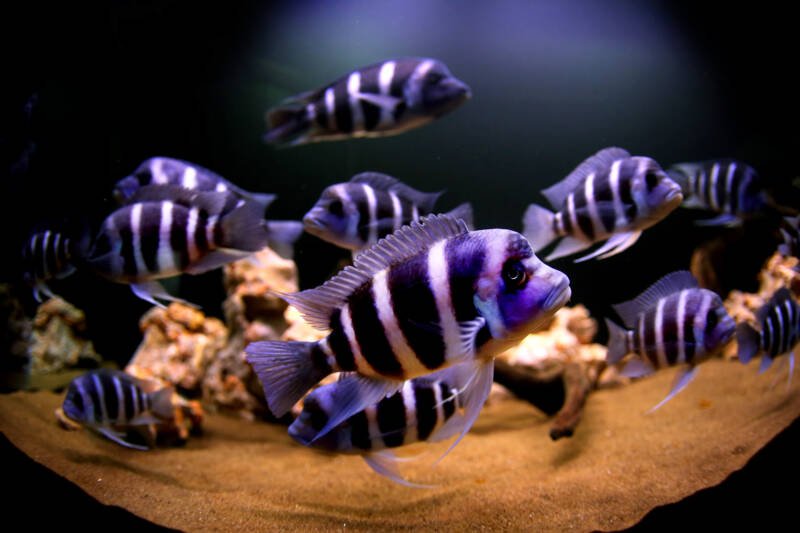
Before we explain how to correct low pH, we need to understand what pH is.
[toc]
What is pH?
pH is the measurement of how acidic or basic the water is. The pH scale runs from 0 to 14 pH units. 7.0 is considered neutral.
As the water becomes more acidic, the pH level drops. Tomato juice pH is 4.0. Battery acid is about 0. Drain cleaner has a pH of about 14.
Most freshwater community fish do well in a pH range of 6.5 to 8.0. Some sensitive fish species require a narrow pH range to thrive.
What Determines pH in my Aquarium?
The main factor that influences the pH in your tank is alkalinity. Alkalinity is a type of water hardness.
General hardness is the level of calcium and magnesium. General hardness does not affect the pH level.
Alkalinity, also known as carbonate hardness, is the level of bicarbonate and carbonate.
The Importance of Alkalinity
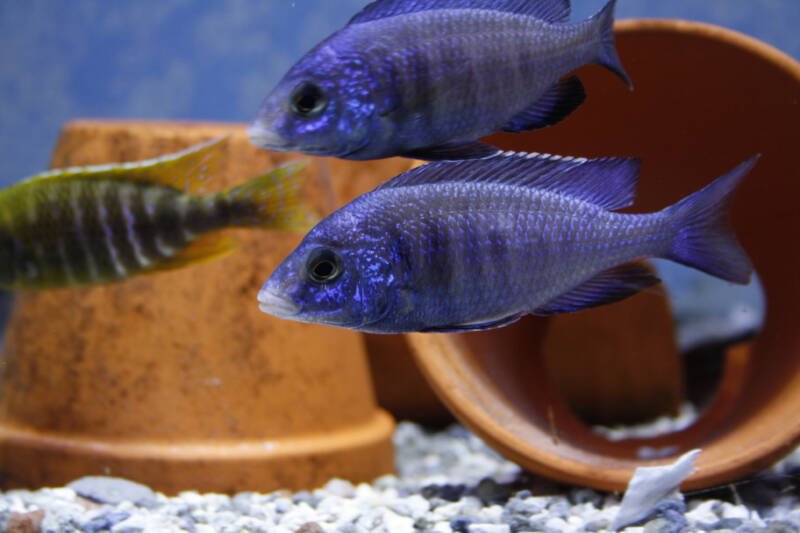
Alkalinity stabilizes the pH and prevents rapid shifts up or down the pH scale.
If the alkalinity level is too low, the pH in your aquarium becomes unstable. Low alkalinity levels are usually the cause of low pH problems in freshwater aquariums.
Tap Water and Alkalinity
The water you add to your aquarium will affect the pH level. Most municipal water supplies have the alkalinity adjusted, so the pH is about 7.8 or above.
Well water supplies are privately owned and not regulated. The alkalinity of some well water is very low and has an acidic pH.
It is a good idea to measure the pH and alkalinity of your tap water.
Measuring Alkalinity
It’s easy to measure the alkalinity level in your aquarium. Liquid KH hardness test kits are easy to use and will provide very accurate results.
You can use dip strips to get a general idea, but results won’t be as precise as with liquid test kits.
Causes of Low Alkalinity
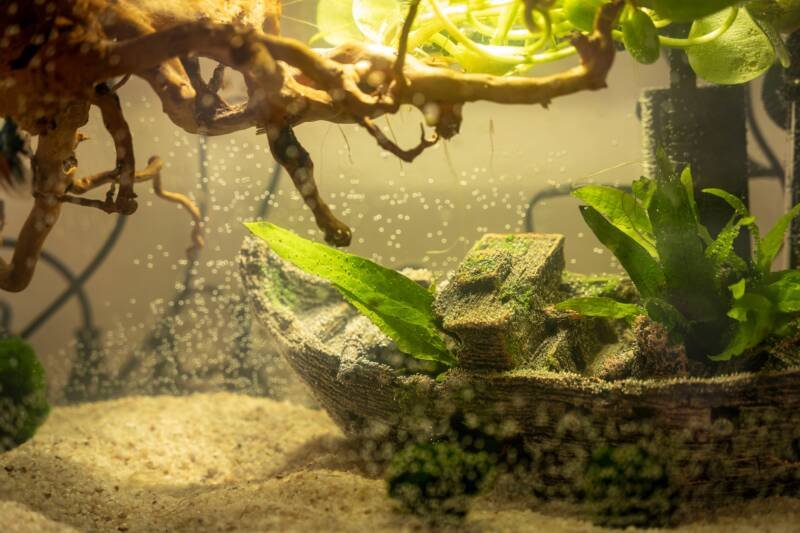
The first thing to test is the alkalinity of the water you add to your aquarium. Tap water can have an alkalinity as high as 500 ppm or nearly zero ppm.
It depends on the source of the water. Most municipal water is treated to have an alkalinity of at least 200 ppm. Well water is unregulated and sometimes has a very low alkalinity.
Reverse osmosis and distilled water will contain no alkalinity. If you fill your tank with low alkalinity water, you’ll probably have a low pH in the aquarium.
Test your aquarium and compare its alkalinity to the water you’re adding to it. If the tap water has a few hundred ppm of alkalinity and your aquarium has 50 ppm or less, natural causes are reducing the alkalinity and causing a low pH problem.
Natural Loss of Alkalinity
Biological filtration, which converts ammonia to nitrite and then to nitrate, creates acids as a byproduct of making your water safe for fish.
Over time the acids neutralize alkalinity and allow for the pH to drop.
If your tap water has adequate alkalinity, you’ll probably never see the pH drop below 7.0.
That’s because every top-off and water change adds alkalinity to the aquarium. But if you’re adding low alkalinity water, it is possible for the alkalinity to drop along with pH.
Big Fish and Over-Stocking
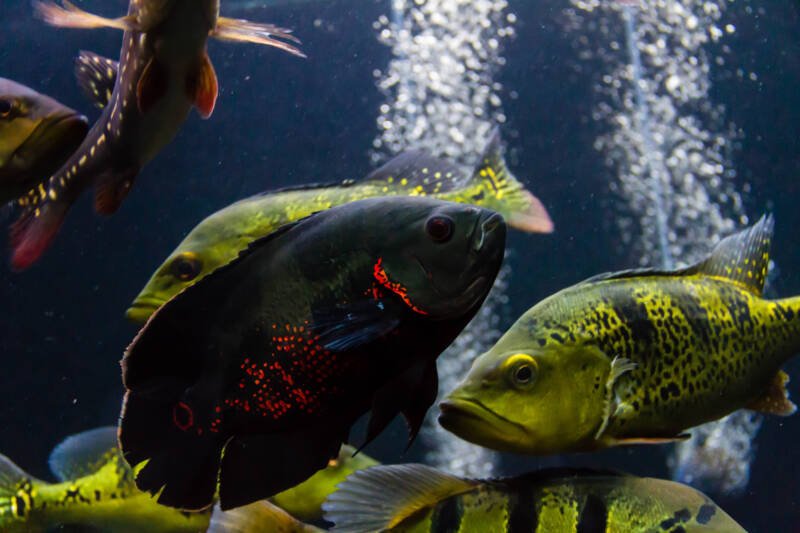
The more fish you have, the more waste they produce. Big fish, like Oscars, produce a lot of waste too. This causes the biological filter to remove a lot of ammonia and nitrite.
This process releases more acid into the tank, using up alkalinity at a fast pace.
Even if your tap water has a good amount of alkalinity, the biological filter activity could use it up if your tank is packed with fish.
Ways to Fix a Low pH Problem
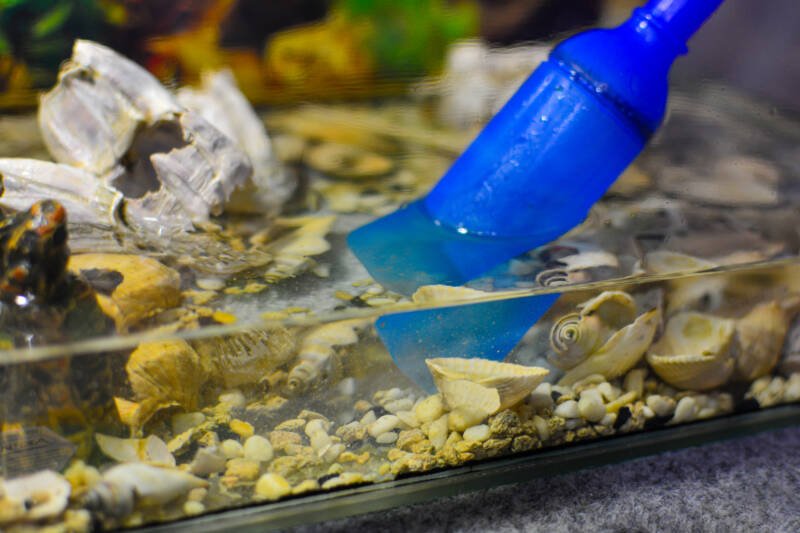
Water Changes
One of the easiest ways to correct low pH and alkalinity is through water changes.
If your tap water contains more alkalinity than your aquarium, start making 20-30% water changes.
Repeat them daily until the pH increases to the desired level. You should be able to watch the alkalinity level rise with each water change.
pH Adjusters
A pH adjuster might work if they add alkalinity. Some liquid adjusters raise pH but don’t add any carbonates to the water.
Check the label for ingredients. Powdered adjusters usually raise alkalinity and pH.
Phosphate-based pH buffers will automatically raise the pH to a pre-set level, like 7.0. These buffers don’t add carbonate but will stabilize pH levels.
Seashells and pH
You may have read that adding marine shells to a freshwater aquarium will raise the pH.
The shells are made of calcium carbonate. This form of carbonate won’t really dissolve in aquarium water.
That means shells don’t release alkalinity into the water. It takes a very low pH to dissolve shells.
The fish would not be able to live in this type of acidic water for very long. Shells are not a good solution for raising the pH.
Final Thoughts
If you have a low-pH problem in your aquarium, test the alkalinity in your tank and tap water before grabbing a pH adjuster.
Then take action to correct the problem and stabilize the pH using the methods outlined in this article.
If you have any questions or comments, please leave them below.